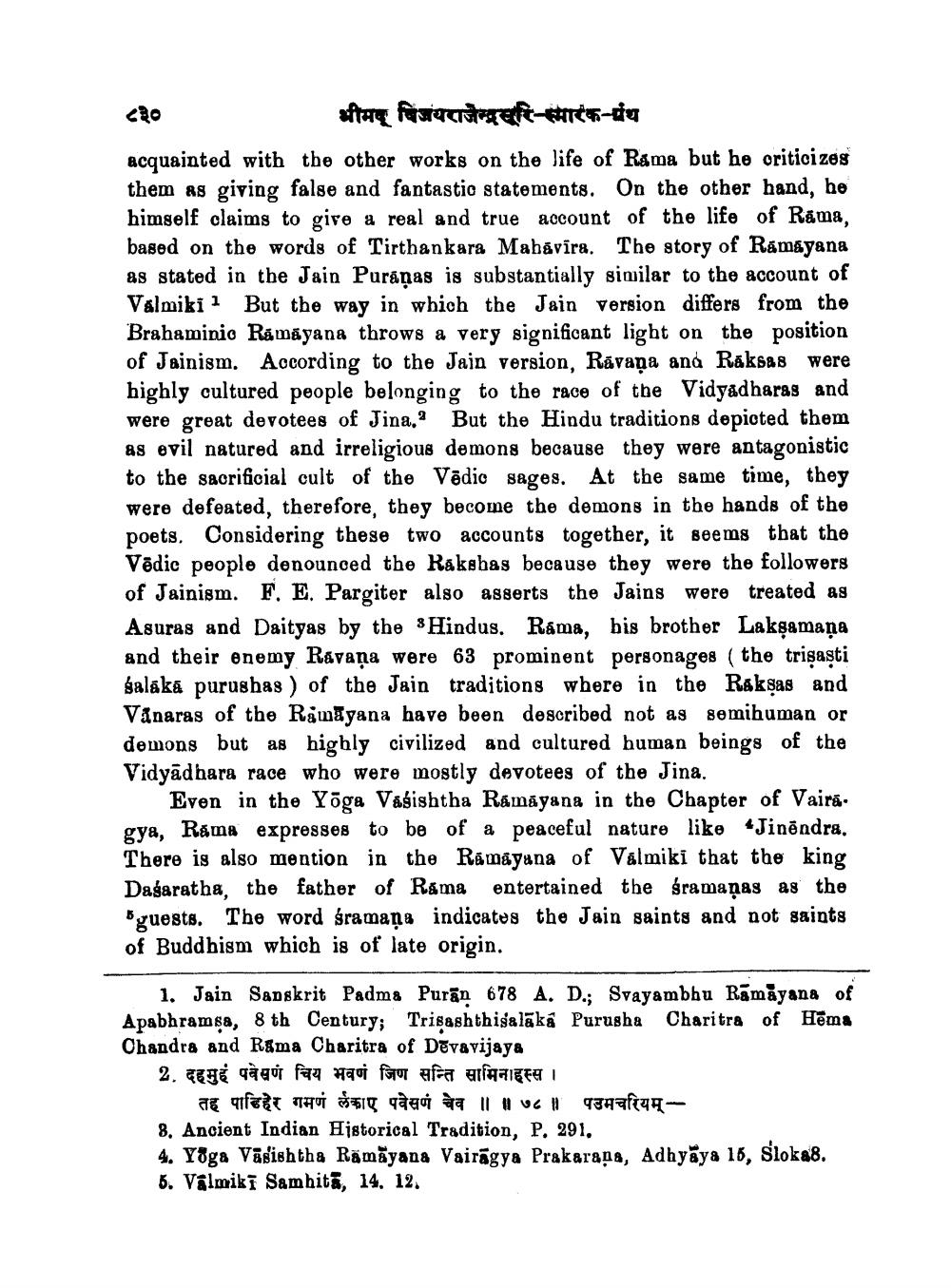________________
भीम विजयराजेन्द्रसरि-स्मारक-पंथ acquainted with the other works on the life of Rama but he criticizes them as giving false and fantastic statements. On the other hand, he himself claims to give a real and true account of the life of Rama, based on the words of Tirthankara Mabávīra. The story of Ramayana as stated in the Jain Puranas is substantially similar to the account of Valmiki 1 But the way in which the Jain version differs from the Brahaminio Ramayana throws a very significant light on the position of Jainism. According to the Jain version, Ravana and Raksas were highly cultured people belonging to the race of the Vidyadharas and were great devotees of Jina. But the Hindu traditions depicted them as evil natured and irreligious demons because they were antagonistic to the sacrificial cult of the Vēdic sages. At the same time, they were defeated, therefore, they become the demons in the hands of the poets. Considering these two accounts together, it seems that the Vēdic people denounced the Rakshas because they were the followers of Jainism. F. E. Pargiter also asserts the Jains were treated as Asuras and Daityas by the 3 Hindus. Rama, bis brother Lakşamaņa and their enemy Ravana were 63 prominent personages (the trişasti salakā purushas ) of the Jain traditions where in the Raksas and Vanaras of the Rim yana have been described not as semihuman or demons but as highly civilized and cultured human beings of the Vidyadhara race who were mostly devotees of the Jina.
Even in the Yöga Vagishtha Ramayana in the Chapter of Vaira. gya, Ráma expresses to be of a peaceful nature like Jinēndra. There is also mention in the Ramayana of Valmiki that the king Dagaratha, the father of Ráma entertained the sramaņas as the Byuests. The word sramana indicates the Jain saints and not saints of Buddhism which is of late origin.
1. Jain Sanskrit Padma Puran 678 A. D.; Svayambhu Rāmåyana of Apabhramsa, 8 th Century; Trisashthigalāká Purusha Charitra of Hēma Chandra and Rama Charitra of Devavijaya 2. दहमुहं पवेसणं चिय भवणं जिण सन्ति सामिनाहस्स ।
तह पाडिहेर गमणं लेकाए पवेसणं चेव ॥ ॥ ७८॥ पउमचरियम्8. Ancient Indian Hjstorical Tradition, P. 291, 4. Yoga Väsishtha Rämāyana Vairāgya Prakarana, Adhyâya 16, Sloka8. 6. Valmiki Samhită, 14, 12.




